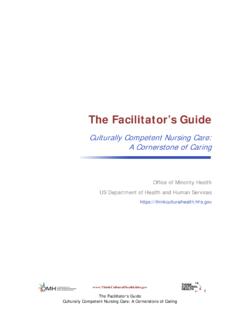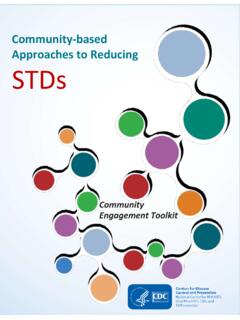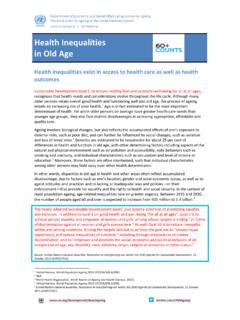Transcription of Environmental Justice Task Force - Wa
1 Report to the Washington State Governor and Legislature Environmental Justice Task Force Recommendations for Prioritizing EJ in Washington State Government Fall 2020. To request this document in another format, call 1-800-525-0127. Deaf or hard of hearing customers, please call 711 (Washington Relay) or email Para solicitar este documento en otro formato, llame al 360-236-4110. Clientes sordos o con problemas de audici n, favor de llamar al 711 (servicios de rel de Washington) o env e un correo electr nico a Task Force Staff Elise Rasmussen, Project Manager Esmael Lopez, Community Engagement Coordinator Hannah Fernald, Administrative Coordinator For more information / Para m s informaci n: Environmental Justice Task Force Information Page: ormation Environmental Justice Task Force Meeting Agendas, Minutes, and Materials Page: Materials Christy Curwick Hoff |Manager, Governor's Interagency Council on health disparities (360) 236-4110.
2 Governor's Interagency Council on health disparities Website: Environmental Justice TASK Force . 2| FINAL REPORT. Contents Acronyms .. 5. 5. Executive Summary .. 6. Words Hold Power .. 12. Prioritizing Environmental Justice in 12. The Environmental Justice Task Force .. 27. Environmental Justice 36. Environmental Justice Principles .. 36. Environmental Justice Task Force Recommendations .. 38. I. Measureable Goals and Model Policy Recommendations .. 39. II. Environmental health disparities Map Recommendations and Guidance .. 53. III. Community Engagement Recommendations and Guidance .. 62. Areas for Further Study .. 69. Conclusion .. 69. Task Force Member Statements .. 70. Non-Majority Opinion Statement .. 73. Appendices .. 76. Environmental Justice TASK Force . FINAL REPORT |3. We've got to decide that we want to live in a world that is sane and happy and healthy, and that everyone deserves that.
3 -Majora Carter, Environmental Justice Advocate Environmental Justice TASK Force . 4| FINAL REPORT. Acronyms List of Common Terms/Titles and their Acronyms Acronym Full Term/Title ADA Americans with Disabilities Act ( ADA accessible). BIPOC Black, Indigenous, and People of Color CIA Cumulative Impact Analysis ( Environmental health disparities Map). COVID-19 Coronavirus Disease 2019, also known as 2019 novel coronavirus EHD Map Environmental health disparities Map EJ Environmental Justice EJTF EJ Task Force ESHB 1109 Engrossed Substitute House Bill 1109 (2019-21 State Operating Budget). GARE Government Alliance on Race and Equity LEP Limited English Proficiency SEP Supplemental Environmental Project USEPA United States Environmental Protection Agency WA Washington (as in Washington State). WTN Washington Tracking Network Acknowledgement The Environmental Justice Task Force (EJTF) recognizes that the fight for Environmental Justice is ongoing it did not begin with the EJTF, and it will not end with the EJTF.
4 We express our sincerest gratitude to the communities across Washington state who have been on the frontlines fighting for Environmental Justice . The EJTF has greatly benefitted from community knowledge, wisdom, and expertise, and our hope is that communities see themselves in this report. We acknowledge that every step closer to Environmental Justice for Washingtonians is because of the power that community holds. Environmental Justice TASK Force . FINAL REPORT |5. Executive Summary The EJTF's Authorizing Budget Proviso & Responsibilities The Environmental Justice Task Force (EJTF) was created through a proviso in the state's 2019- 2021 operating budget (Engrossed Substitute House Bill 1109, section 221, subsection 48). In accordance with the budget proviso quoted below, this report includes: I. Measurable Goal Recommendations: Measurable goals for reducing Environmental health disparities for each community in Washington state and ways in which state agencies may focus their work towards meeting those goals.
5 II. Model Policy Recommendations: Model policies that prioritize highly impacted communities and vulnerable populations for the purpose of reducing Environmental health disparities and advancing a healthy environment for all residents.. III. Environmental health disparities Map Recommendations: Guidance for using the Washington Environmental health Disparity Map to identify communities that are highly impacted by EJ issues with current demographic data.. IV. Community Engagement Recommendations: Best practices for increasing meaningful and inclusive community engagement that takes into account barriers to participation that may arise due to race, color, ethnicity, religion, income, or education level. 1. Report Overview The first chapter of the EJTF report provides context for what Environmental Justice (EJ) is, how to build on existing EJ work in Washington, and why state government must prioritize addressing EJ issues and Environmental health disparities .
6 The second chapter focuses on the EJTF's process for developing recommendations, a statewide EJ definition, and EJ principles. The final chapter of the report includes all EJTF recommendations. The report appendices include additional resources, including guidance developed by the EJTF's Community Engagement Subcommittee for how state agencies can develop their own community Recommended Statewide EJ Definition engagement plans (Appendix C). The fair treatment and meaningful involvement of all people regardless of race, color, national Environmental Justice Definition origin or income with respect to the The EJTF developed a recommended development, implementation, and statewide definition for EJ that builds upon enforcement of Environmental laws, regulations the Environmental Protection Agency's and policies. This includes using an intersectional (USEPA) definition by adding the outcomes lens to address disproportionate Environmental and health impacts by prioritizing highly we want to see in Washington state.
7 The impacted populations, equitably distributing EJTF recommends that the definition be resources and benefits, and eliminating harm. adopted by all Washington state agencies to 1. Engrossed Substitute House Bill 1109, section 221, subsection 48. Environmental Justice TASK Force . 6| FINAL REPORT. identify and address current Environmental injustices and to ensure future decisions and actions promote EJ. Environmental Justice Principles EJ Principles The EJTF also developed five EJ principles to 1. Achieve the highest attainable serve as an initial blueprint for a shared Environmental quality and health vision for EJ in Washington state. The outcomes for all people. 2. Adopt a racial Justice lens. following EJ principles were informed by 3. Engage community meaningfully. communities across the state and with 4. Be transparent.
8 Recognition and reflection of the Principles of 5. Be accountable. Environmental Justice adopted at the 1991. First National People of Color Environmental Leadership Summit. The EJ principles section in this report defines each of these principles in more depth, including actions state agencies can take to work toward each principle. Measurable Goals and Model Policy Recommendations The first set of recommendations in this report focus on measurable goals and model policies. These recommendations are further organized into four categories that name the intended outcomes the EJTF would like to see enhanced in state government: Improving Government Accountability to Communities Incorporating EJ into Government Structures, Systems, and Policies Investing Equitably Improving Environmental Enforcement Additionally, the report includes guidance for using the Government Alliance on Race and Equity's (GARE) Racial Equity Toolkit as an implementation tool to assist agencies with tracking and communicating progress toward EJ and embedding EJ in agency strategic plans.
9 Environmental Justice TASK Force . FINAL REPORT |7. Measurable Goals & Model Policy Recommendations to Reduce Environmental health disparities 1. Measurable Goals: Track & Communicate Progress Improving In partnership with communities, agencies should create a standard method to develop, Government track, evaluate, and publish EJ and health goals focused on pollution reduction, eliminating Accountability Environmental health disparities , and improving community engagement. to 2. Model Policy: Permanent EJ Workgroup Communities Convene a permanent EJ interagency workgroup of relevant agency staff that includes members representing overburdened communities. 3. Model Policy: Embed EJ in Strategic Plans Agencies shall make achieving EJ part of their strategic plans in order to integrate EJ into agencies' protocols and processes.
10 Incorporating EJ into 4. Model Policy: Dedicated EJ Staff in State Agencies Government Agencies will have at least one staff position dedicated to integrating EJ principles Structures, specifically, and equity more broadly, into agency actions. Systems, and Policies 5. Model Policy: Incorporate EJ in State Environmental Laws EJ considerations should be incorporated into a range of state Environmental laws. Further, Environmental and natural resource state agencies should consider EJ in developing agency request legislation, analyzing bills during legislative session, and conducting rule reviews. 6. Model Policy: Required use of EJ Analysis Agencies should adopt, and the Legislature should consider, requiring EJ analyses, including but not limited to the use of the Environmental health Disparity Map, that combine the cumulative impact of Environmental health indicators such as Environmental exposures, Environmental effects, impact on sensitive populations, and other socioeconomic factors.






